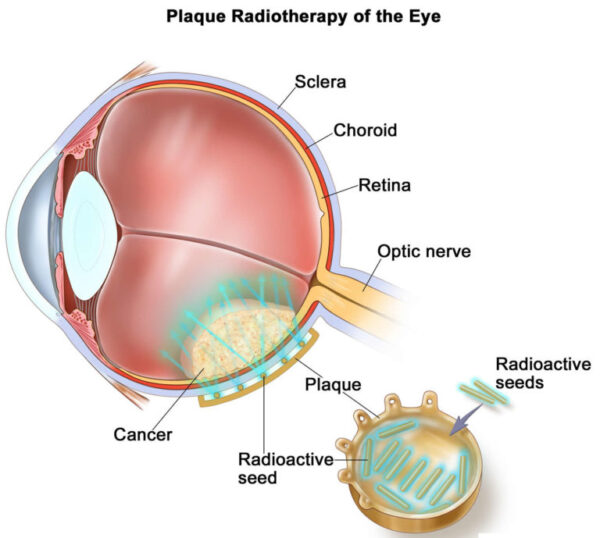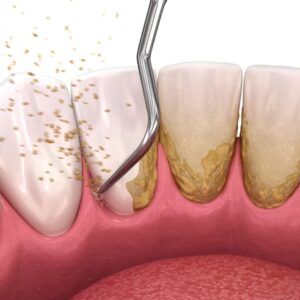What is Plaque Radiotherapy?
Plaque radiotherapy, also known as brachytherapy, is a targeted radiation therapy used to treat certain eye tumors, particularly choroidal melanoma, a cancer of the pigment cells in the eye’s middle layer. This approach delivers a high dose of radiation directly to the tumor while minimizing exposure to surrounding healthy tissues.
Procedure:
- Preparation: General anesthesia is typically used to keep you unconscious during the procedure.
- Plaque Placement: A thin disc-shaped plaque, made of gold and containing radioactive seeds, is surgically sewn onto the sclera (white part) of the eye, positioned directly over the tumor.
- Radiation Delivery: Over a predetermined period (usually several days), the radioactive seeds emit radiation, destroying cancer cells within the tumor.
- Plaque Removal: Once the radiation treatment is complete, the plaque is carefully removed from the eye.
Suitable Candidates:
- Patients with small to medium-sized choroidal melanomas.
- Individuals who want to preserve their vision as much as possible.
- Those who are not good candidates for other treatment options like enucleation (eye removal) or traditional external beam radiation therapy.
Unsuitable Candidates:
- Patients with very large tumors or tumors that have spread beyond the eye.
- Individuals with certain eye conditions that could make plaque placement difficult or risky.
- People with a high risk of bleeding or infection.
Advantages:
- Targeted Treatment: Delivers high radiation doses directly to the tumor, minimizing damage to healthy tissues.
- Vision Preservation: Offers a chance to save vision in some cases, where other treatments might require eye removal.
- Outpatient Procedure: Plaque placement and removal are often performed on an outpatient basis.
- Shorter Treatment Time: Compared to traditional radiation therapy, plaque treatment is completed within a few days.
Complications:
- Radiation Retinopathy: Damage to the light-sensitive retina, which can lead to vision loss. This risk increases with higher radiation doses.
- Radiation Cataract: Clouding of the eye’s natural lens, a potential long-term side effect.
- Glaucoma: Increased eye pressure, which can be managed with medication or surgery.
- Eye Infection: Although uncommon, infection is a possible complication requiring prompt medical attention.
- Bleeding: Bleeding can occur during surgery but is usually minimal with modern techniques.
Preoperative Care:
- Comprehensive eye exam to assess tumor size, location, and suitability for plaque therapy.
- Discussion of risks and benefits with your ophthalmologist.
- Blood tests and other medical evaluations to ensure you can undergo surgery safely.
Postoperative Care:
- Eye drops to prevent infection and inflammation.
- Wearing an eye shield for protection while sleeping.
- Regular follow-up appointments to monitor for complications and vision changes.
- Potential need for additional treatment, such as laser surgery for a secondary cataract.









Reviews
There are no reviews yet.